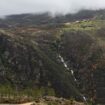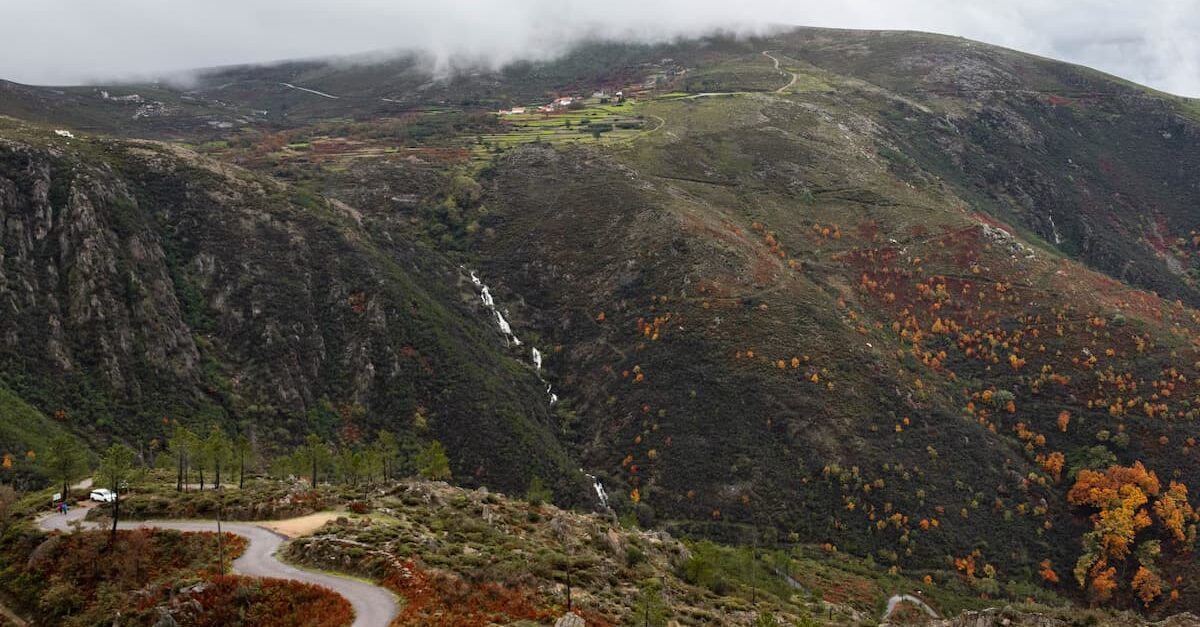
Go World Travel is reader-supported and may earn a commission from purchases made through links in this piece.
With its picturesque white churches, tilted town square and natural wilderness, the village of Arouca was born a beauty. Located in a fertile valley it is almost entirely enclosed with an impressive mountainous plateau.
By the coast, not far away, the Atlantic Ocean violently hits its blue waters against anything in its way, rocks, remarkable beaches and charming fisher villages.
It is from here the winding rural roads begin their journey upwards, through the rough wilderness where a few traditional villages spontaneously make their appearance across the mountainous landscape. The spiraling route leaves behind the salty air as it rises, replacing it with the crispness of altitude.
Best Tips & Tools to Plan Your Trip
In these remote mountain lands nature and the power of heaven rule. Nature here has a will of its own, and it has resulted in an unbelievable phenomenon, so strange, in fact, that legends were born out of it.
A miracle so unusual that it has baffled scientists for decades, an occurrence almost out of this world. Believe it or not, in this breathtaking region, miraculously stones give birth to stone.
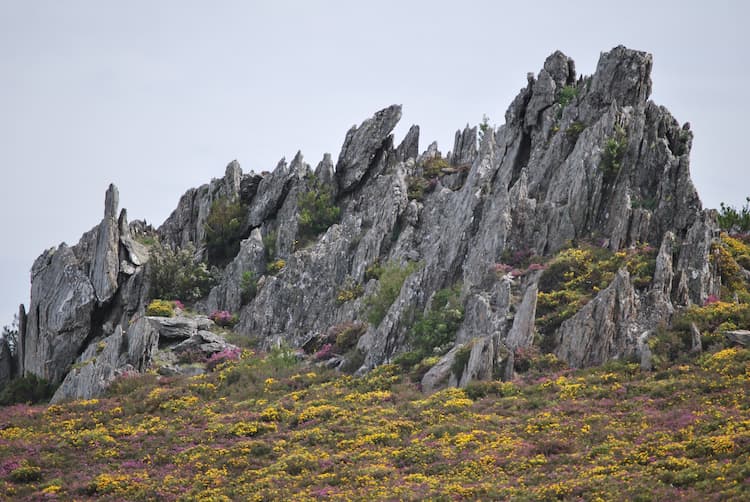
Arouca UNESCO Global Geopark
On a vast plateau in remote northern Portugal, lavender-blue shadows stretch across the horizon, and waterfalls cascade down the rocky mountains below.
A place where delicate yellow wildflowers create belts of sunny color, in the otherwise murky landscape. From high above, the mountains, amongst them the tungsten-rich Serra da Freita, appear to us like a spread-out undulating carpet.
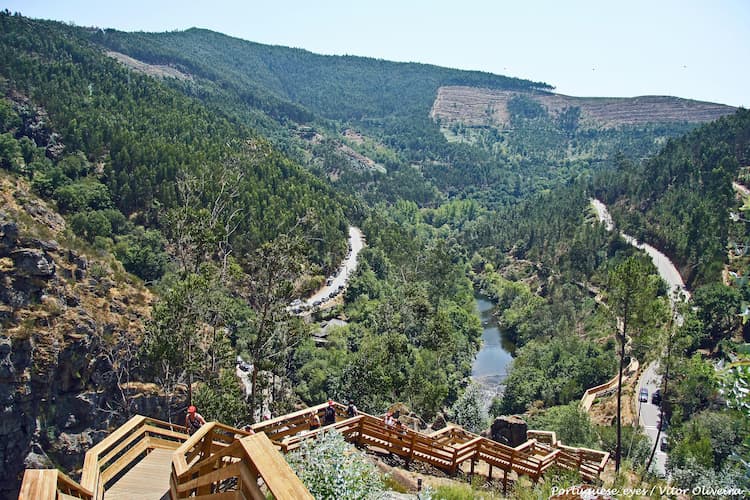
In this bewildering place, we find the Arouca Geopark, forming part of UNESCO’s European Geoparks network, along with one of the world’s longest pedestrian suspension bridges.
The impressive bridge is a marvel of engineering hanging above the Paiva river, encircled by Roman and medieval ruins all framed by this jagged landscape where the highest waterfall in continental Portugal cascades down the craggy mountain walls (70 meters high).
The sight instantly makes one forget that the rest of Portugal actually exists. In this magnificent framework lies one of the world’s best geological sites.
Cliffs That Lay Eggs
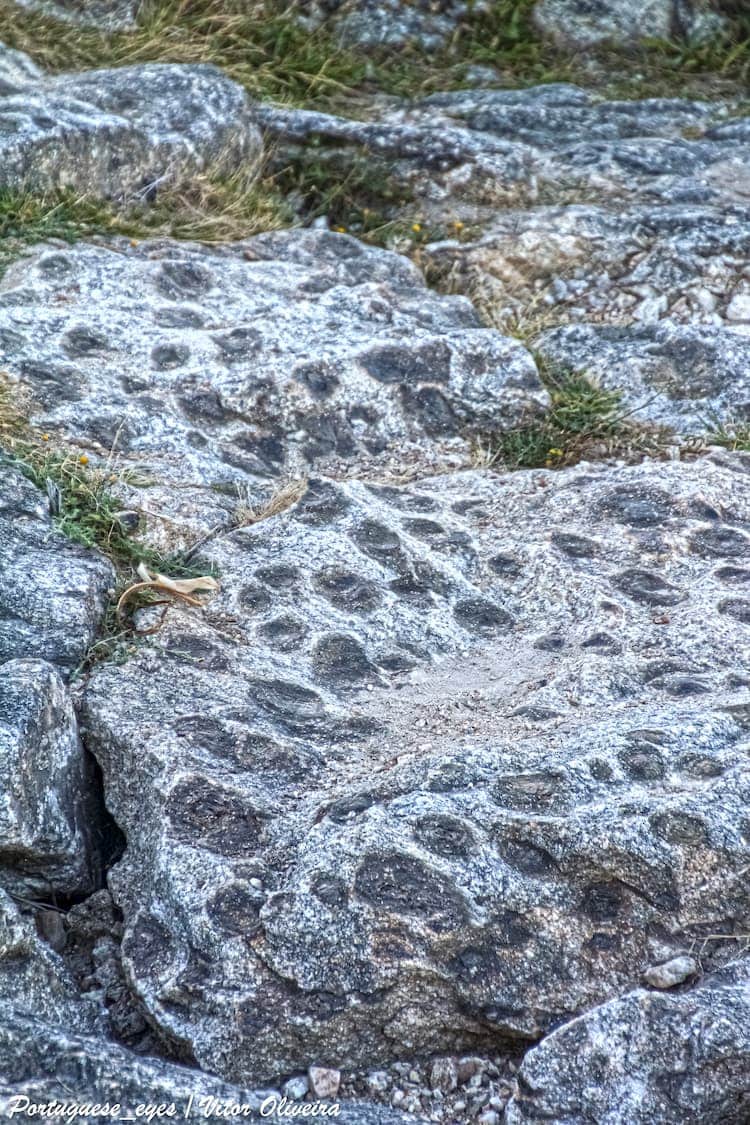
On a mystifying outcrop of granite large rocks filled the covered space, each generously dotted with black circles, but these black spots are more than just flat markings on the enormous boulders, they are actual three-dimensional stones sitting within the larger rock.
Estimations suggest that the rocks as well as the smaller stones inside of them were created around 310 to 320 million years ago. The big granite “mother” rock seems to push out the small “baby” nodules made of biotite, a common rock-forming mineral, inside them. The black nodules are called “Pedras Parideiras”, and as they detach, they become entirely “new” stones.
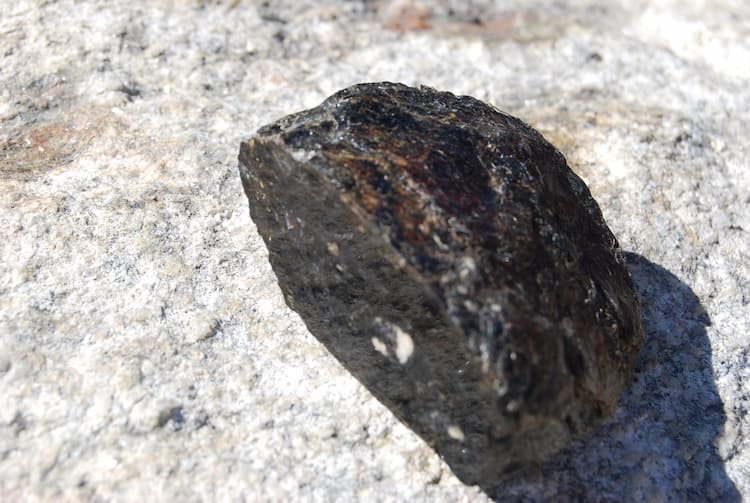
When inside the mother rock they are black and circular in shape but as soon as they are “born” their shape changes and they become oval like an almond and slightly flattened. The smaller “baby” nodules are more resistant to weather and erosion than the bigger “mother rocks”.
It is first after centuries of defying the test of time, challenged by the punishing winds and rains, unbearable heat in summer and frost in winter the “baby” nodules have contracted and expanded enough to spawn out from their “mother”.
With time more “baby” stones are born and while thousands of tiny pebbles and marks are visible near the surface of the granite rocks many more are invisible, still deep inside their “mother” waiting to be born in the distant future.
Planning a last-minute trip to Portugal?
Top Experiences and Tours in Portugal:
- See the sights with a tour of Madeira: Skywalk, Porto Moniz Volcanic Pools, and Fanal Tour
- See Lisbon on the Lisbon: Pena Palace, Sintra, Cabo da Roca, & Cascais Daytrip
- Explore more with this tour of Fátima, Nazaré, and Óbidos Small-Group Day Trip from Lisbon
Where to stay in Portugal:
- Find accommodation with Booking.com
- Get a rail pass through Rail Europe
- Find Bus, Train, and Flight tickets with one search through Omio
In spite of the fact that “orbicular granite” is found in a handful of countries, it is only here in Arouca that the rock actually “gives birth” to bio-convex-shaped discs. The reason is that it is only here on the remote mountainous plateau in northern Portugal that the exact conditions arose under which it was possible to create these nodules.
In fact, the entire Geopark is located on top of a fault system. 300 million years ago, when the process began, the region was extremely volatile. Two tectonic plates (the African and the European) crushed into each other creating this mountain range as well as many others on the Iberian Peninsula.
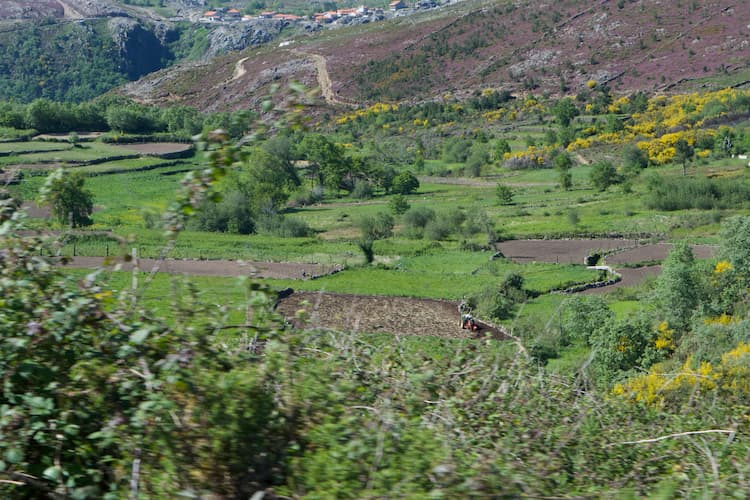
Earthquakes caused fissures in the land and built up such pressure that it caused lava to discharge to the surface while the magma flowed deep underground.
The secret to the continuous “birth” of the biotite baby nodules and the miraculous reproduction process is related to the chemical composition of magma and its interaction with the rocks during the tectonic movement that existed when it formed long ago.
It is possible that the molten rock encased smaller stones before it finally hardened or that the pressure caused small bubble-like fractures in the rock which developed into “baby stones”.
An outcrop of the Pedras Parideiras is similar to a photograph that tells the story about the history of the rock itself because, during the crystallization process of the rock, it preserved the direction of the tectonic forces that were present when it was created.
Meanwhile, the mysterious power of the rare Pedras Parideiras continues to live here. Across the gigantic rocks that lay dispersed in this isolated and wild region rumors and legends can be heard as they fill the air with hope and mystery. They assure that if a woman takes a Pedra Parideira and puts it under her sleeping pillow, she can be sure to conceive a child.
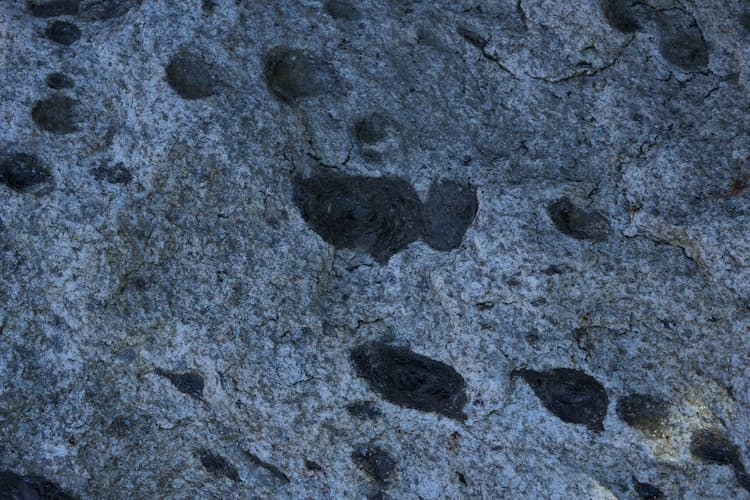
For millennia people travelled from far and wide to get their hands on one of these “precious” stones hoping that its mystic powers would help them conceive. In this magical place where stones give birth to stones, the power of magic lives on.
Arouca Geopark currently has an experimental program for couples who want to “rent” a Pedra Parideira for a defined period of time in the hopes of helping them have a baby. Although the main reason behind it might be to avoid people stealing the stones, many believe in its powers and the introduction of the program has perpetuated the fertility myth.
Inspire your next adventure with our articles below:
Author Bio: Ad Meliora is a History, Travel, Culture and Language writer, eager to learn more and explore the world. You can find Ad Meliora on Medium via: https://medium.com/@ad.meliora.02
- Together at Sea: A Mediterranean Family Adventure - April 27, 2024
- Travel Guide to Colorado - April 26, 2024
- Travel Guide to Croatia - April 26, 2024

